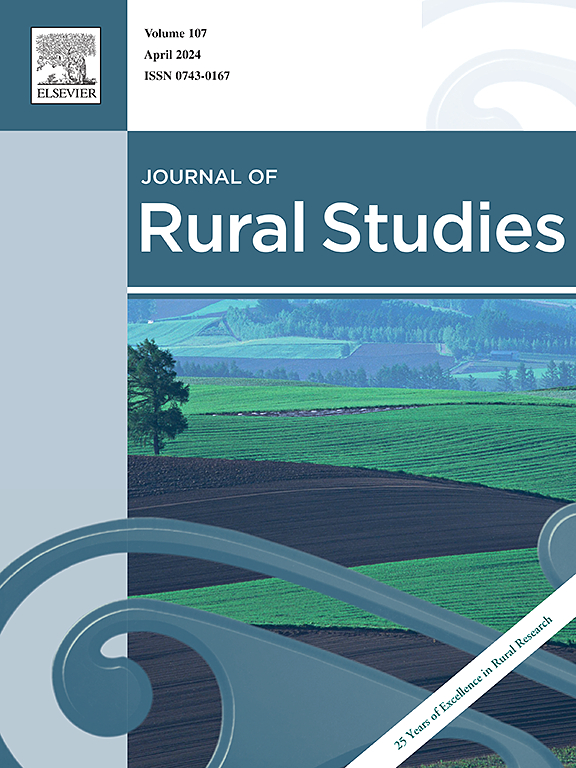Beyond the initial boom: Energy transitions can improve rural development indicators
IF 5.1
1区 社会学
Q1 GEOGRAPHY
引用次数: 0
Abstract
Rural decline, in the form of loss of youth, reduced human capital and poverty remains a key issue for studies of rural systems. The strategies for mitigating and reversing rural decline are not sufficiently understood. Including, how transitions in the global energy system are impacting rural economies and communities, who commonly host the industries and infrastructure. This study extends a previous assessment of the first ten years of an onshore gas industry's growth in rural Australia by analysing the second decade of operations and socio-economic change. The original quasi-experimental design was followed to examine changes in rural decline indicators—migration, education levels, and poverty—across areas with and without onshore gas activity. Socio-economic data were sourced from the Australian Census for 2011, 2016 and 2021. Public government data of location and number of onshore gas wells were used to distinguish regions with, or without onshore gas activity. Overall, in regions with onshore gas activity, greater mitigation of rural decline was observed. Greater inward migration, educational attainment, and less poverty. Inward migration included more older young adults, females and with bachelor's degrees. These second decade observations were consistent with the earlier decade. Though not as positive, as the first decade consisted of the industry's initial boom in construction for resource extraction, logistics and employee housing. This evaluation of the second decade extends the literature with empirical evidence of local rural impacts from the global energy transition. Including, timely insight into the plausibility of improving rural decline and the utility of monitoring the socio-economic indicators over an extended time as part of development policy.
超越最初的繁荣:能源转型可以改善农村发展指标
农村的衰落,表现为青年的流失、人力资本的减少和贫困,仍然是农村制度研究的一个关键问题。减轻和扭转农村衰退的战略还没有得到充分的了解。包括,全球能源系统的转型如何影响农村经济和社区,他们通常拥有工业和基础设施。本研究通过分析第二个十年的运营和社会经济变化,扩展了之前对澳大利亚农村陆上天然气工业发展前十年的评估。按照最初的准实验设计,研究了在有和没有陆上天然气活动的地区,农村人口迁移、教育水平和贫困等下降指标的变化。社会经济数据来源于2011年、2016年和2021年的澳大利亚人口普查。利用政府公开的陆上气井位置和数量数据来区分有或没有陆上天然气活动的地区。总体而言,在有陆上天然气活动的地区,农村地区的下降趋势得到了更大的缓解。向内移民增加,受教育程度提高,贫困减少。向内移民包括更多年长的年轻人、女性和拥有学士学位的人。第二个十年的观测结果与前一个十年一致。尽管没有那么积极,但第一个十年包括该行业在资源开采、物流和员工住房建设方面的初步繁荣。对第二个十年的评估扩展了全球能源转型对当地农村影响的经验证据。包括及时洞察改善农村衰退的可行性,以及长期监测社会经济指标作为发展政策的一部分的效用。
本文章由计算机程序翻译,如有差异,请以英文原文为准。
求助全文
约1分钟内获得全文
求助全文
来源期刊

Journal of Rural Studies
Multiple-
CiteScore
9.80
自引率
9.80%
发文量
286
期刊介绍:
The Journal of Rural Studies publishes research articles relating to such rural issues as society, demography, housing, employment, transport, services, land-use, recreation, agriculture and conservation. The focus is on those areas encompassing extensive land-use, with small-scale and diffuse settlement patterns and communities linked into the surrounding landscape and milieux. Particular emphasis will be given to aspects of planning policy and management. The journal is international and interdisciplinary in scope and content.
 求助内容:
求助内容: 应助结果提醒方式:
应助结果提醒方式:


